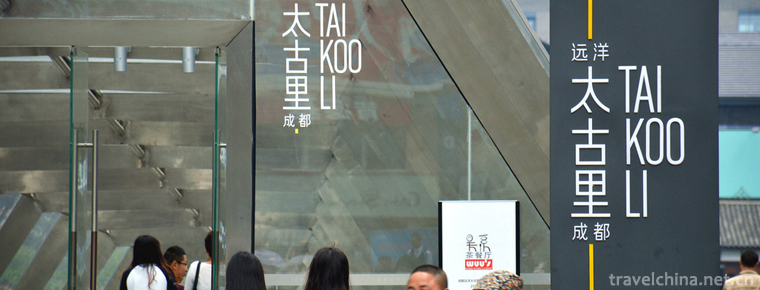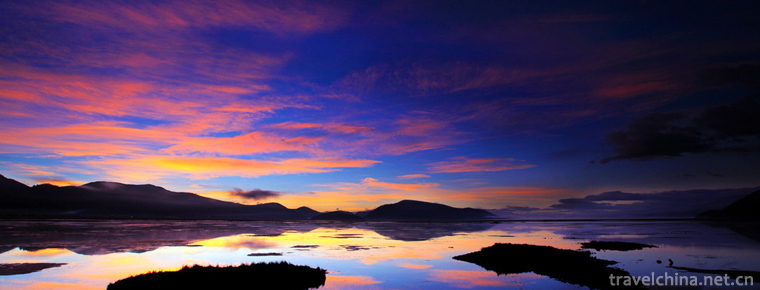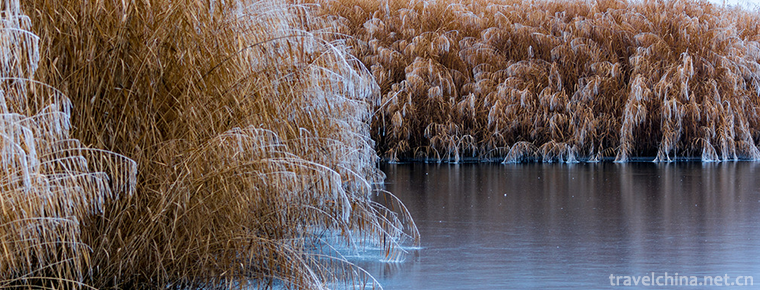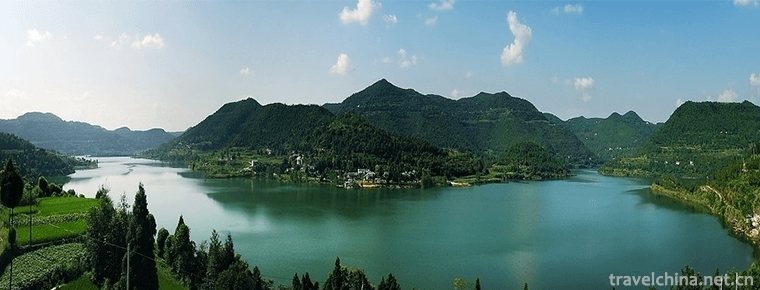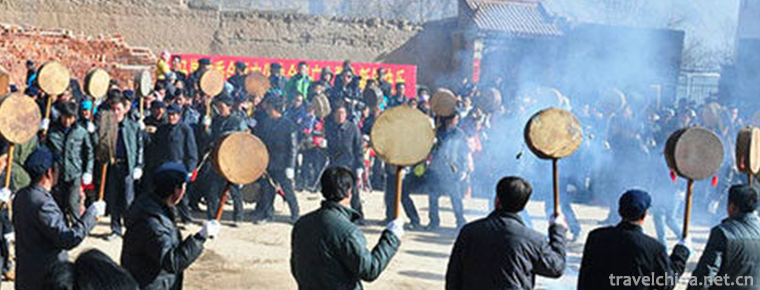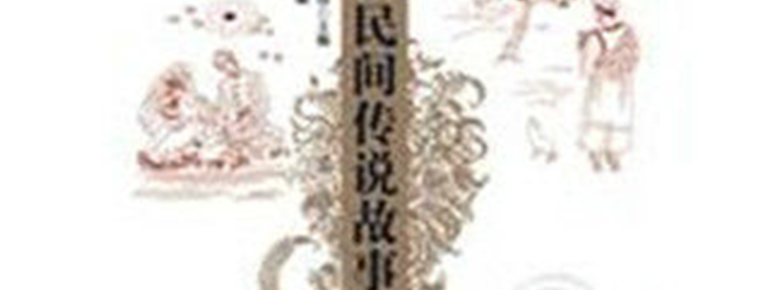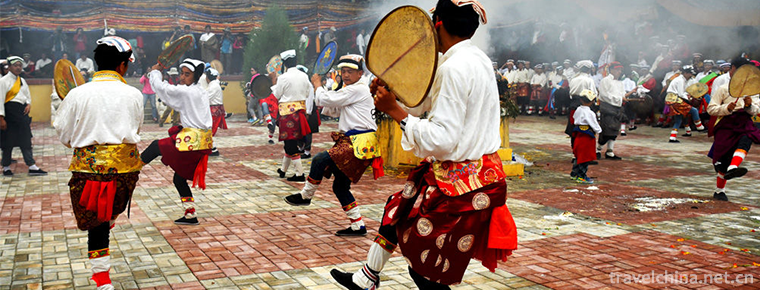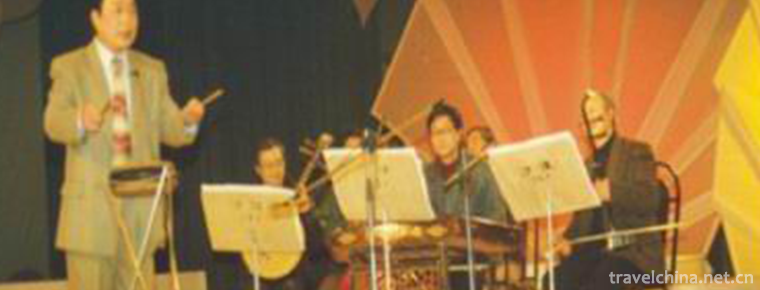Huashan pictographs
Huashan pictographs
Huashan rock paintings are located in the Zuojiang River and its tributary Mingjiang River valley of Chongzuo City, Guangxi (covering Ningming County, Longzhou County, Jiangzhou District and Fusui County of Chongzuo City). ), together with the mountains, rivers and platforms that it depends on, it forms a magnificent cultural landscape of Zuojiang Huashan Rock Painting, which includes about 105 kilometers of Zuojiang and Mingjiang reach.
The inheritance area is 6621 hectares, of which Ningming County is the first inheritance area, Longzhou County is the second inheritance area, Jiangzhou District and Fusui County are the third inheritance area. It is a relic of the sacrifice of Luoyue people, the ancestor of the Zhuang nationality in Zuojiang valley of Lingnan, from the Warring States Period to the Eastern Han Dynasty. Rock painting dates back to the Warring States Period and the Eastern Han Dynasty. It has a history of more than 2000 years. It is rare at home and abroad and has a strong artistic connotation and important archaeological research value because of its wide distribution, great difficulty in painting and magnificent pictures.
Huashan rock paintings show their uniqueness because of their combination of landscape, rock paintings and the lively and rich social life of Luoyue people, the ancestor of the Zhuang nationality in southern China. On July 15, 2016, at the 40th session of the UNESCO World Heritage Committee, held in Istanbul, Turkey, China's World Cultural Heritage Nomination Project "Zuojiang Huashan Rock Painting Cultural Landscape" was selected into the World Heritage List together with Shennongjia, Hubei Province, and became China's 49th and 50th World Heritage Sites. The application of Huashan rock paintings successfully filled in the blank of Chinese rock paintings heritage projects.
In December 2017, it was selected as the first batch of practical education bases and camps for primary and secondary school students in China by the Ministry of Education.
Image content
Pictures drawn on cliffs from the Warring States Period to the Eastern Han Dynasty in China. It is 14.5 kilometers southeast of Ningming County, Guangxi Zhuang Autonomous Region, on the East Bank of North Ming River in Huashan Tun (see photo). Huashan, which is called "Lanlai" in Zhuang, is translated into "Painted Stone Mountain" in Chinese. Song and Ming dynasties have been recorded. Surveys in the early 1950s found that. In 1988, the State Council of the People's Republic of China promulgated it as a national key cultural relics protection unit. The cliff wall of Linjiang River is obviously inclined. The picture is about 172 meters long, about 90 meters high from the surface of the river, 30 meters above the bottom of the river, and 3 to 10 meters from the foot of the mountain terrace. Painting pigments are ochre hematite powder, diluted and blended with animal fat, and painted directly on natural cliffs with grass handles or bird feathers. The painting method uses a single color block flat painting method, which only shows the external outline of the object, without detailed description. Style simple, rough style, the scene is very spectacular. There are more than 1900 existing images, including characters, animals and utensils. Characters only draw the head, neck, body and limbs, no five features and other details. There are two basic shapes: body upright and side body. The body figure is tall, the largest is more than 2 meters, both arms are extended to both sides flat, elbows raised, legs open, knee bending and half squatting, waist cross wearing a long knife or sword. Side portraits are numerous and small in size. Most of them are arms raised from the chest, legs forward, facing one side and making jumps.
Animal images are mainly of dogs, all lateral, trotting. The images of the objects mainly include knives, swords, bronze drums and buttons with bronze sheep horns. Knives and swords are usually worn around the waist of the body-holder. There are many bronze drums. They only draw the drum face. Some have awns in the center of the drum face and some have ears on the side of the drum face. These images interlace and coexist on the screen, forming a unit by unit, filling the whole picture. Typical combinations are: centered around a tall, tall, tall, swordsman, with a dog under his feet, a bronze drum on one or more sides under his crotch or beside him, and a large number of short sidekicks around or on both sides. These pictures may be a record of a sacrificial ceremony and a relic of witchcraft culture. Because of long-term exposure, the color of many portraits gradually faded, blurred, some murals have collapsed, and protection measures are being studied.
Introduction to rock paintings
Huashan rock painting is the representative of the Zuojiang River Basin rock painting group, and it is also the largest single, richest content and best preserved rock painting found in China so far. Located on the West Bank of Mingjiang River in Yaoda Village, Zhongzhen, Ningming County, is the relic of Luoyue people, the ancestor of Zhuang nationality, who lived in the Zuojiang River valley of Lingnan from the Warring States Period to the Eastern Han Dynasty. It has a history of 1800-2500 years. It is famous for its magnificent scale, spectacular scenes and numerous images. It has become a typical representative of rock paintings in the Zuojiang River valley of Guangxi. In 1988, it was promulgated by the State Council as a national key cultural relics protection unit. It has been listed in the preparatory list for China's declaration of world cultural heritage. According to experts'textual research, Huashan rock paintings can be traced back to the early Spring and Autumn Period and the Warring States Period. It has undergone continuous improvement in the Warring States Period, the Western Han Dynasty, the Eastern Han Dynasty and other historical periods to form this impressive masterpiece.
Huashan, known as pay Laiz in Zhuang language, is a colorful mountain, which is a rocky mountain with ups and downs. It is 270 meters high and 350 meters long in North and south. It is steep in the west of the Yangtze River and inclines to the riverside. Rock paintings are painted in red with hematite, animal glue and blood mixed. The picture is 170 meters wide, 40 meters high and covers an area of more than 8000 square meters. In addition to blurring, there are still more than 1800 countable images, which can be divided into 110 groups. Pictures are drawn from 2 meters at the foot of the hill, with the middle part of 5-20 meters high as the largest number of portraits. Rock paintings consist of human figures as the main body. People are generally in front and side postures, all of which are nude and limping, making half-squat postures with hands and knees bent, supplemented by horses, dogs, bronze drums, swords, clocks, boats, roads and the sun, etc. Each group of people in the middle or upper position is mostly with knives hanging on their waists and swords on their heads. Beast-shaped decoration, mounted several meters tall giant, majestic high overlooking drumming, music, carnival, should be the leader of the tribe or the commander of activities. The composition of these rock paintings and the shape of the characters sketch out pictures with rich content and deep artistic conception, which truly reflects the social activities of Luoyue which have passed away for a long time.
Huashan rock painting is one of the largest ancient rock paintings at home and abroad. It combines the grand scale of the whole (Zuojiang rock painting), the grand momentum of the individual (its own) and the "three big" characteristics of the individual figure (in rock painting), thus forming a grand momentum that other rock paintings can not compare with; Huashan rock painting mostly adopts plane shaping, i.e. projection of monochrome flat painting. By using special soft brush to smear the outline of the image on the rock wall to form a "silhouette" artistic effect, the rough appearance and active dynamic feeling of Huashan rock painting are created, which has a very strong artistic appeal and is the immortal masterpiece and heritage basis of the painting art of the ancestors of the Zhuang nationality.
Archaeological record
Huashan rock painting is like a heavenly book that has not yet been deciphered. There are still many mysteries that can not be solved: What is the content conveyed by Huashan rock painting? How did these images be painted on this high and steep rock wall when productivity was underdeveloped more than 2,000 years ago? Why do they risk their lives to paint? What is the purpose and significance? Huashan Rock Painting has a history of more than 2,000 years. Why can the color still be so bright today? What pigments did the ancients use? And so on a series of questions until now have not found a completely convincing answer.
And the content of Huashan rock painting is another mystery, which is another focus of experts'research. Because of the long history of Huashan rock painting, there is a lack of relevant documentation. Experts can only analyze and study the pictures of rock paintings and unearthed cultural relics. Experts believe that this is a celebration of Luoyue people's victory in the war against foreign invasion; some believe that Luoyue people pray for heaven to bless their soldiers, strong horses and prosperous society; others believe that rock paintings are Luoyue people's willingness to use to suppress River demons and pray for good weather and style... There are different opinions, so far there is no definite conclusion. But it can be affirmed that the rock gallery of Zuojiang River basin, centered on Huashan rock paintings, is rare at home and abroad, with its wide distribution of rock paintings, great difficulty in painting and magnificent picture. It has strong artistic connotation and important archaeological research value. From the rock paintings, we can not only see the artistic achievements of the ancient Luoyue people, the ancestor of the Zhuang nationality, but also feel the rich content of the social life of the ancient Zhuang nationality and the national spirit of diligence, courage and struggle.
geographical environment
Huashan is located in the south of the Tropic of Cancer. It is a warm subtropical monsoon climate with high temperature and rainy. The annual average temperature ranges from 19 to 22 C, and the average rainfall is 1242.2 mm. Most of the rainfall is concentrated in June to September, accounting for 63.3% of the annual rainfall.
The Mingjiang River, originating from 100,000 mountains, flows through the region from south to north. The basin above Huashan covers an area of 4185 square kilometers, with an average annual flow of 83.9 cubic meters per second. According to historical records, the maximum flood level in Huashan area is 116.407 meters.
Huashan area is located in the southwest end of Nonggang Nature Reserve and belongs to the peak cluster depression geomorphological area. The area is surrounded by mountainous peaks connected by pedestals. The peak is mainly composed of Carboniferous carbonate strata. Closed dissolution depressions of varying sizes between peaks are well developed. The size of the depression generally varies from tens to hundreds of meters in diameter, and the maximum can reach more than kilometers. The depression is covered by loose Quaternary deposits, and there are one to several karst buckets, falling water tunnels or relief spillway tunnels.
Thematic content
Compared with the endless speculation about why to paint, the research on the content of painting is more targeted because of the intuitive picture as the basis.
Expert textual research
According to expert textual research, these pictures drawn on natural cliffs from the Warring States Period to the Eastern Han Dynasty have a history of more than 2,000 years. The earliest record of Huashan rock paintings appeared in Zhang Mu's Anecdotal Records of the Ming Dynasty. This article describes it as follows: "There are many miles of high cliffs in Taiping Prefecture of Guangxi, and there are soldiers carrying knives and sticks, or with or without leaders." Ningming State Chronicle in Guangxu years recorded: "Fifty miles away from the city, there are red figures in the cliffs, all nude, big or small, or to fight or ride horses."
The Huashan rock paintings on the East Bank of the Mingjiang River are painted on the cliff of Linjiang River. The whole picture is more than 200 meters long and 40 meters high. There are more than 1800 portraits, including people, horses, dogs, knives, swords, bronze drums and horn buttons and bells. There are more than 1300 portraits. Rock portraits can be divided into front portraits and side portraits. The front portraits are tall, with legs crossed and knees bent, arms raised, and a handsome look. The central figure in the rock paintings is in the center of the painting. He is the leader of the team with a big figure, a tiger crown, a sword and a majestic manner. The general leader is also strong, plagiarism unusual, unique, prominent in the group. Side portraits are numerous, some wearing headgear, some naked, some men and women, vigorous and powerful movements. Many smaller figures crowded around the tall "chieftain", forming a composition of stars holding the moon. In the long run, the rock wall is red as blood, and close-up portraits are dense. The whole picture mixes many elements together, noisy and warm.
Thematic form
Although there is only one color on the screen, and the characters only draw a rough outline with lines, the vast scene forms an atmosphere of boldness and heroism, which makes the viewers have a warm, grand and solemn feeling. In the picture, the characters or swords are crouching and bending their arms, dancing in the shape of frogs, and the images of bronze drums, bells, sun, boats and dogs are interspersed. Looking up at the rock paintings, a magnificent scroll shows us: the sound of bronze drums, people jumping, excitement, thunder and thunder. The pictures of ochre portraits are not only like solemn and solemn sacrificial scenes, but also like iron and steel battlefields of soldiers and horses, as well as the happy pictures of the harvest returned from hunting by the ancestors.
Theme research
What themes do these pictures convey? What does the intricate symbols mean? Why do the characters dance neatly and uniformly? At present, experts and scholars have their own opinions, and no consensus has been formed.
From the attitude of many characters, the picture is more like a grand sacrifice or festival celebration. Most of the characters in the painting stretch their arms flat on both sides, bend their elbows up and separate their legs into crouches, obviously imitating the gesture of frogs. The worship of frog gods is the ancient tradition of the Zhuang people, and frog dance is still popular among the people. Secondly, there are many bronze drums in the picture, which are also used in sacrificial occasions. In addition, some characters have obvious gender characteristics and pictures. There were women with six cards in their arms and small groups of people. Some people thought that this reflected the reproductive worship of the ancient Luoyue people. According to these contents, it can be inferred that the picture expresses a happy, solemn and sacred scene, if not sacrifice, but also a kind of celebration ceremony. In ancient Luoyue people's life, the grand festival celebrations were often carried out at the same time as sacrifices. In the process of holding ceremonies, of course, there was no lack of beating bronze drums and dancing frogs.
No matter which scene the picture describes, it reflects the life scene of the ancient Luoyue people, expresses people's reverence for heroes and praise for strength, and wishes for the prosperity of human beings and animals, good weather and good weather.
Theoretical basis
There is a theory that rock paintings are used by the leaders of Luoyue nationality to show their dominant power and to publicize their cultural and military skills. According to textual research, in the Han Dynasty, Chongzuo, Ningming, Longzhou and Fusui were scattered in many parts of the Luoyue nationality, among which Ningming was a relatively large tribe. Experts believe that the great leaders of Huashan tribe formed an alliance with other small tribes at that time, and rock paintings were paintings recording the tribal alliance at that time. Sporadic rock paintings have been found on the stone walls of the Zuojiang River basin for hundreds of kilometers. Compared with Huashan rock paintings, other rock paintings are smaller in scale, but the human figures in the paintings are much the same. It can be inferred that the distribution of rock paintings shows the scope of the tribal alliance and also symbolizes the power of the leaders of different tribes.
In addition, there is a more reliable view that the Luoyue people draw Huashan rock paintings in order to sacrifice the gods. In ancient times, people's primitive religious worship was very pious, and they paid special attention to the sacrificial activities. Every time they sacrificed, they spent a lot of manpower and material resources. Even so, they still felt that they could not express their sacrifice to the gods, so they depicted the scenes of the sacrifice on the rock wall, and used rock paintings to create a never-ending ceremony.
In addition, experts have put forward many theories such as "oath master", "Qinggong", "Zhenshui". Although each theory can justify itself, it can only be regarded as a hypothesis because there is no precise historical evidence to support it.

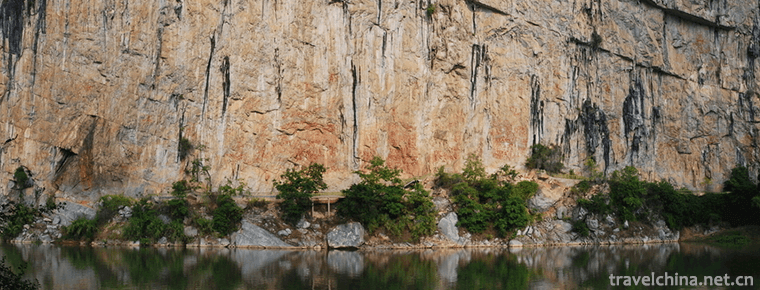
-
Napa Lake
Naphai nature reserve is located in Shangri-La County, Diqing Tibetan Autonomous Prefecture, Yunnan.
Views: 162 Time 2018-10-20 -
Bosten Lake Scenic Area
Bosten Lake Scenic Spot is a national 5A scenic spot, covering an area of 988 square kilometers, is located in Xinjiang, China's scenic spots, Bosten Lake was known as the West Sea in ancient times,.
Views: 218 Time 2018-12-12 -
Shengzhong Lake Scenic Area
Shengzhong Lake Scenic Spot: The largest artificial lake in southwest China, Shengzhong Lake, is located in Shengzhong Lake Scenic Spot of National AAAA Tourist Area in Southern County of Sichuan Prov.
Views: 222 Time 2018-12-26 -
Badang dance
Badang Dance is a kind of ancient folk dance, which originated from the ancient Qiang people's "Temple Festival" in Dingxi Minxian, southeastern Gansu Province. It is also a sacrificial ritu.
Views: 189 Time 2019-04-02 -
Teochew woodcarving
Chaozhou woodcarving is a Chinese folk sculpture art, mainly used for architectural decoration, artifact decoration, furniture decoration, desk decoration, etc. After careful carving.
Views: 256 Time 2019-04-16 -
Hui Folk Stories
Hui Folklore Stories is a book published by Ningxia People's Publishing House in 2009 by Li Shujiang and Wang Zhengwei..
Views: 355 Time 2019-05-04 -
June meeting in Regong
Regong June Festival is a unique traditional cultural festival of Tibetan and Tu villages in Tongren County, Qinghai Province. It has been circulated for more than 1400 years. Every June in the Lunar .
Views: 93 Time 2019-06-11 -
Shuoguzi
Shuoguzi, also known as Jingzhou Shuoguzi, is a kind of traditional folk music in Hubei Province. It mainly talks, sings in the middle, beats drums and tells stories, accompanied by suona. It is popul.
Views: 131 Time 2019-06-16 -
Health preservation in traditional Chinese medicine
Health preservation in traditional Chinese medicine refers to a kind of medical activity that can prolong life by taking care of life, strengthening physique and preventing diseases in various ways. H.
Views: 231 Time 2019-08-03 -
Mount Fulai
Mount Fulai is one of the top 40 tourist attractions in China. It is 27 kilometers away from Shunan Bamboo Sea central scenic spot and 10 kilometers away from qidonggou, a 4A tourist attraction. It is composed of more than 80 hills. .
Views: 165 Time 2020-10-16 -
Jiufeng Mountain Scenic Area
Jiufeng Mountain is located in Dabao Township in the northwest of Pengzhou. It is about 97 kilometers away from Chengdu, with an altitude of more than 3315 meters. It is the crown of Pengzhou mountains, a sacred and mysterious area.
Views: 220 Time 2020-11-05
